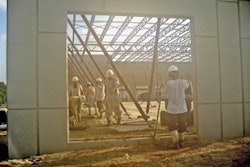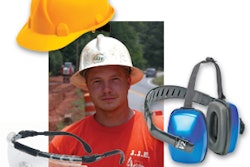Let's say you're working on a job that includes digging a narrow trench roughly 3 ft. wide by 7 ft. deep. Although it's fairly loose soil, no workers will be required to enter the trench, so no shoring is applied, and no signs or tape are placed around the opening.
Shortly after the trench has been dug, a representative for the project owner is walking the site. It's starting to get dark and the individual doesn't realize he is standing close to the trench edge. The edge gives way and he falls and is injured. Question: Since the individual wasn't an employee, can you be held negligent for not following proper OSHA procedures?
Employers in construction are well aware they can be held negligent if an employee is injured or killed due to an OSHA violation. But you may not realize you could also be held liable under these same rules for incidents involving non-employees.
In the article "A Different Perspective on OSHA Standards" (SafetyXchange.org, July 2006), Glenn Demby, esq., points out that legally we are all required to exercise reasonable care to protect each other against potential injury. The steps required to do so depend largely on the circumstances and our relationship to the individuals involved.
As an employer, you must follow OSHA standards to protect employees against workplace hazards. However, when a third party is involved, the "negligence law" comes into play. It requires applying a standard of reasonable care to the situation.
The challenge is in defining what "reasonable care" actually entails. This is where existing law often comes into play. In a negligence case, a judge or jury may choose to view OSHA standards as a benchmark to determine what steps could have been taken to protect the third party under the circumstances.
Demby cites an actual case in which a construction contractor was hired to repair fire damage to a house. The homeowner planned to stay elsewhere while the work was completed. However, he returned home to retrieve some items from the basement. It was night and the basement stairwell was unlit. The contractor had removed the steps going into the basement during construction, but did not have any warning signs in place. The homeowner took a bad fall and subsequently sued the contractor. The jury found the contractor guilty of negligence and ordered it to pay the homeowner $183,000 in damages.
In reaching its verdict, Demby notes, the jury took into account that the contractor would have been required under OSHA standards to block off the basement entry and/or post warning signs, as well as ensure the area was properly lit. In its appeal, the contractor argued that OSHA laws applied only to employer/employee relations and should not have been a consideration. The State Supreme Court upheld the verdict.
The point here is just because a hazard may not be present for employees, reasonable steps should still be taken to mitigate risks to third parties who may enter your jobsites. Following OSHA standards in applicable situations can help you to avoid liabilities that could ultimately put the future of your business at risk.



















